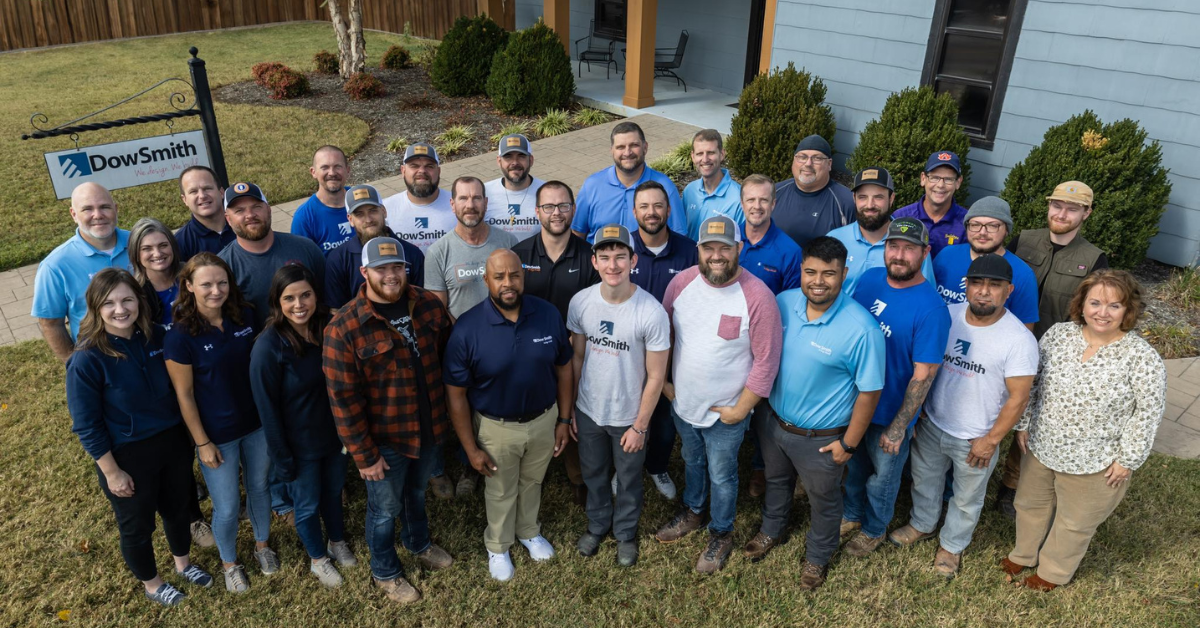3 min read
Building Success: How Dow Smith Company Doubled in Size While Preserving Core Values
Situation In a season of high growth, every new employee has the potential to either strengthen or weaken company culture. Dow Smith, the founder...
4 min read
 Best Christian Workplaces
:
March, 31 2025
Best Christian Workplaces
:
March, 31 2025

Flatirons Community Church is a multi-site church that casts a wide net across Colorado in a region where people are more likely to go hiking or skiing than to church. Their vision is no matter what, no matter where, Jesus is for you, and we are, too. They reach people who feel like God gave up on them and who don’t feel like they fit into church. Their raw and real ministry has resulted in tremendous growth over several decades. Flatirons Community Church is one of the 100 largest churches in the United States.
After years of consistent growth, the attendance numbers plateaued. Aware that they needed to assess their culture, the church worked with Best Christian Workplaces to do an Employee Engagement Survey in 2019. The results, along with focus groups sponsored by Best Christian Workplaces, showed an unhealthy environment, and the elders asked Jim Burgen, lead pastor, to take a sabbatical so that he could take the time to be restored before he came back to lead.
While it is easy to focus on a top leader as the cause of organizational problems, an honest assessment of organizational health involves leaders and staff at all levels. It wasn’t just the lead pastor who needed a re-set, it was the whole culture.
Jesse DeYoung, Executive Pastor, has been with Flatirons since 2012, starting as a campus pastor. He had been on the senior leadership team for only three months before Jim started his sabbatical. Jesse reflects on the start of their journey to organizational health in a recent Flourishing Culture Leadership Podcast: “The elders prioritized staff health during that season over every other metric that we had as a church (such as growth or giving), and that laid the groundwork for us to start healing. We also realized that it was going to take some time to get healthy. We didn’t want to rush things and pretend like things were better before they got better.”
Flatirons’ cultural transformation was not a quick fix but a strategic, multi-year journey. They started with an honest assessment of their situation. From there, they worked on redefining core values and developing a clear vision for workplace health. They also empowered mid-level managers to implement strategy. Ongoing efforts include improved communication and culture-building practices such as staff training, spiritual formation, and leadership development.
While there had been previous signs of unhealthy behaviors among the staff, the Employee Engagement Survey provided objective insights into workplace health. Leaders engaged in self-reflection and recognized the crisis in their workplace culture. They committed to making changes to move towards health.
At the time, the staff were invited to assess their own commitment to organizational health. Some people decided to step off staff, and others decided to recommit to the vision and direction of the church.
The priority was togetherness and unity. The whole staff started meeting weekly to pray, worship, and share. Previously their staff meetings had been monthly.
Jesse shares, “We felt like togetherness was a key to getting healthy, even as we knew things were not perfect.”

Once the commitment to working together toward health was clear, the leadership team realized they needed to clarify the cultural values around which they could be united. What core values would embody Flatirons? And how would they all live out these values?
The defined values became a focus for hiring, training, performance conversations, and rewards, and were integral to everyday activities. Karen Berge, Executive Pastor of Campuses, was a key leader who helped pilot and operationalize the emphasis on core values. Alignment with core values among the staff has become a solid foundation for engagement and unity.
As the leadership focused on each step of the process toward health, they continued an annual Employee Engagement Survey. In 2022, their survey results showed marked improvement in their culture and values. At the same time, people felt like the strategy was unclear. So working on strategy became the next part of the journey.

As the leadership team considered practical ways to implement strategic planning and clarity in goals, they embraced the Entrepreneurial Operating System (EOS) approach to provide clarity and focus for trimester and annual goals.
Jesse highlights the process: “We are not afraid to take business best practices to make the church more successful in accomplishing the mission of Jesus. And for an organization of our size, empowering the midlevel managers was so important. We turned over a lot of decision-making to our really capable mid-level managers—our campus pastors and department heads. We call them our Strategic Alignment Team (SAT).”
By focusing on strategy and clarifying common goals, Flatirons’ scores on strategy improved on their next Employee Engagement Survey. Along with that improvement, their survey scores helped them realize that the next area of focus should be the relational aspects of leadership and communication, to continue to move toward flourishing.
By empowering mid-level leaders to own and implement the strategy of the church, the senior leadership team was freed up to focus on spiritual leadership, pastoring the staff, and the larger vision of the church.
At a recent staff retreat, they brought in a spiritual director to lead the staff in practices to fill their souls. They also incorporate time in their regular staff meetings for spiritual practices. In addition, the rhythm of sabbaticals is now a part of their cycle for all levels of the organization. This provides people with an opportunity to hear from God in a fresh way and be filled up to serve.

After a five-year journey of intentional work to improve the culture at Flatirons Church, Jesse reflects, “With a healthy culture we can move fast, we can run really hard, and we can enjoy what we’re doing. So we never want to go back. When you're aligned and healthy, the staff are more confident, from the front-line staff to the lead pastor. And our congregation senses the unified direction and the momentum.”
Giselle Jenkins, Best Christian Workplaces’ Consulting Director, reflects on the journey that Flatirons has taken: “Their turnaround in workplace culture is one of the biggest improvements I’ve seen in my work with Ministry Partners over the years. They had a strong commitment to listen to feedback and implement improvements. And they weren’t afraid to incorporate management best practices into their creative culture. They had their eyes on real improvement and didn’t settle for quick wins, focusing on long-term changes. It’s a delight to see the church flourishing.”
As the Flatirons team serves from a position of flourishing, they are committed to continue learning and growing each year. They continue to invest in team members, and they are able to see the fruit of their investment in workplace health. The Employee Engagement Survey provides a consistent way to assess and refine their culture and strategy each year.
Resources:

3 min read
Situation In a season of high growth, every new employee has the potential to either strengthen or weaken company culture. Dow Smith, the founder...

Lumbee River Electric Member Corporation (EMC) in North Carolina had a series of CEOs over the previous five years when Jon T. Locklear took the helm...

The Best Path to Pastoral Succession: Build a Flourishing Culture Now Where do you start when it’s time for a leadership transition in your church?...